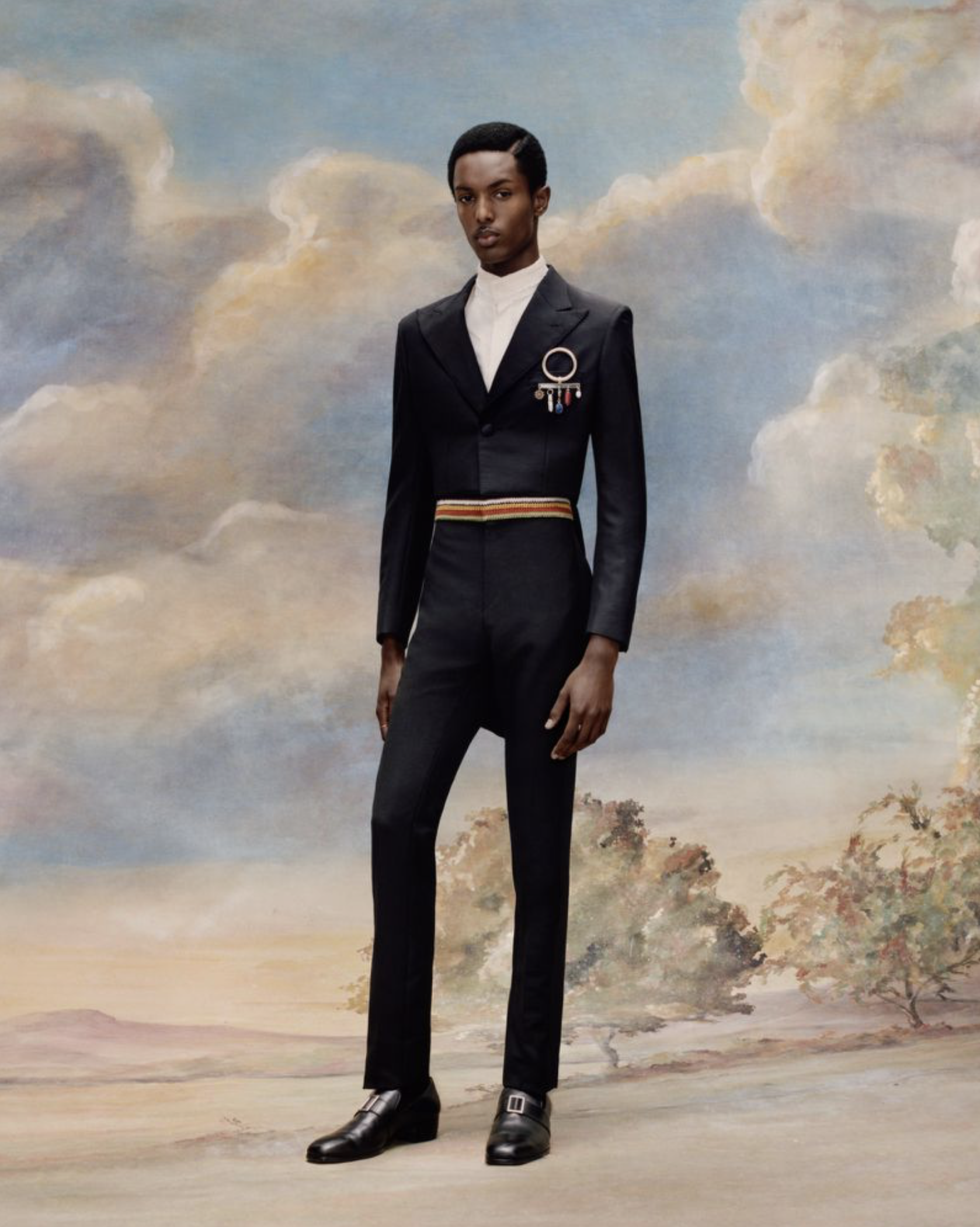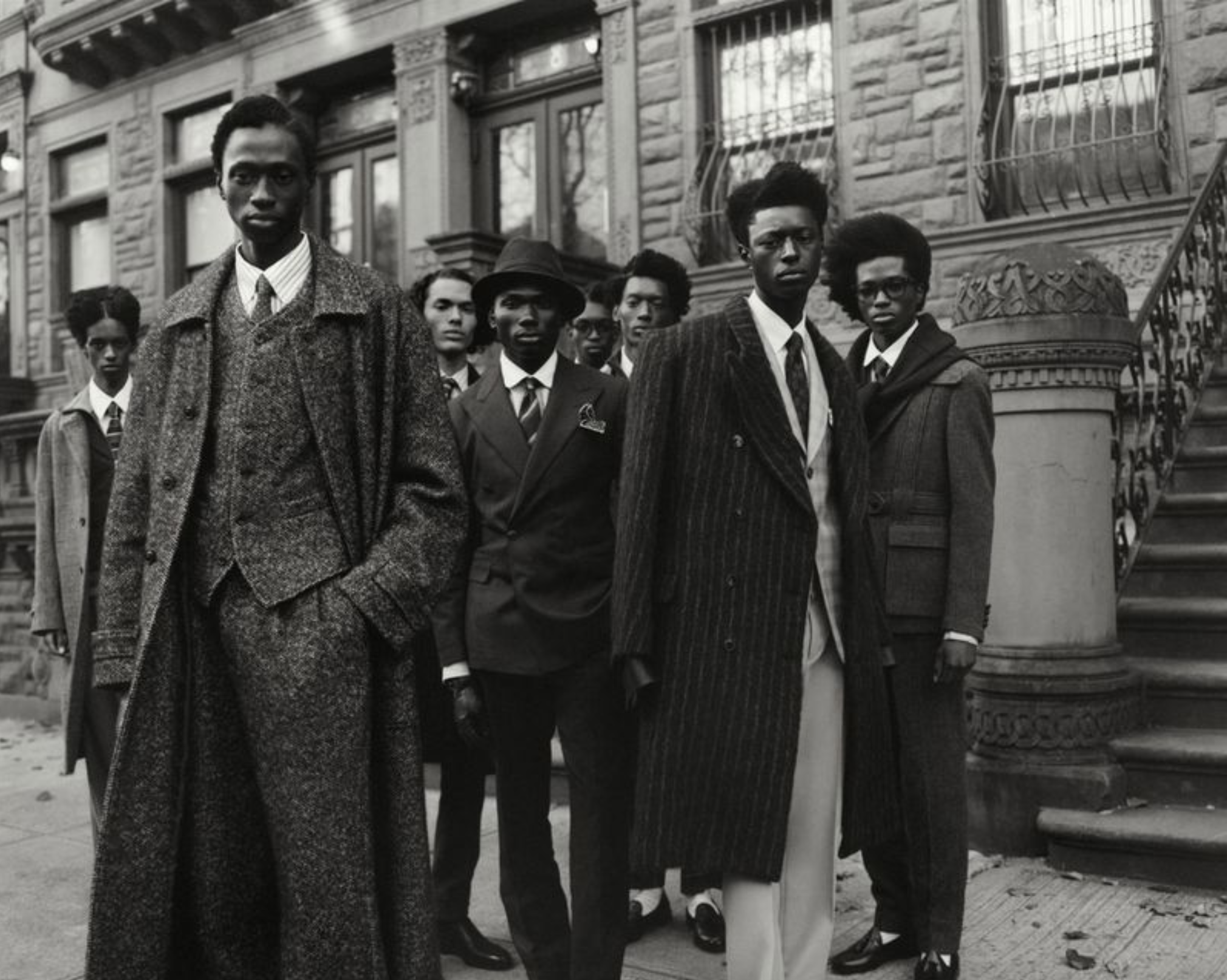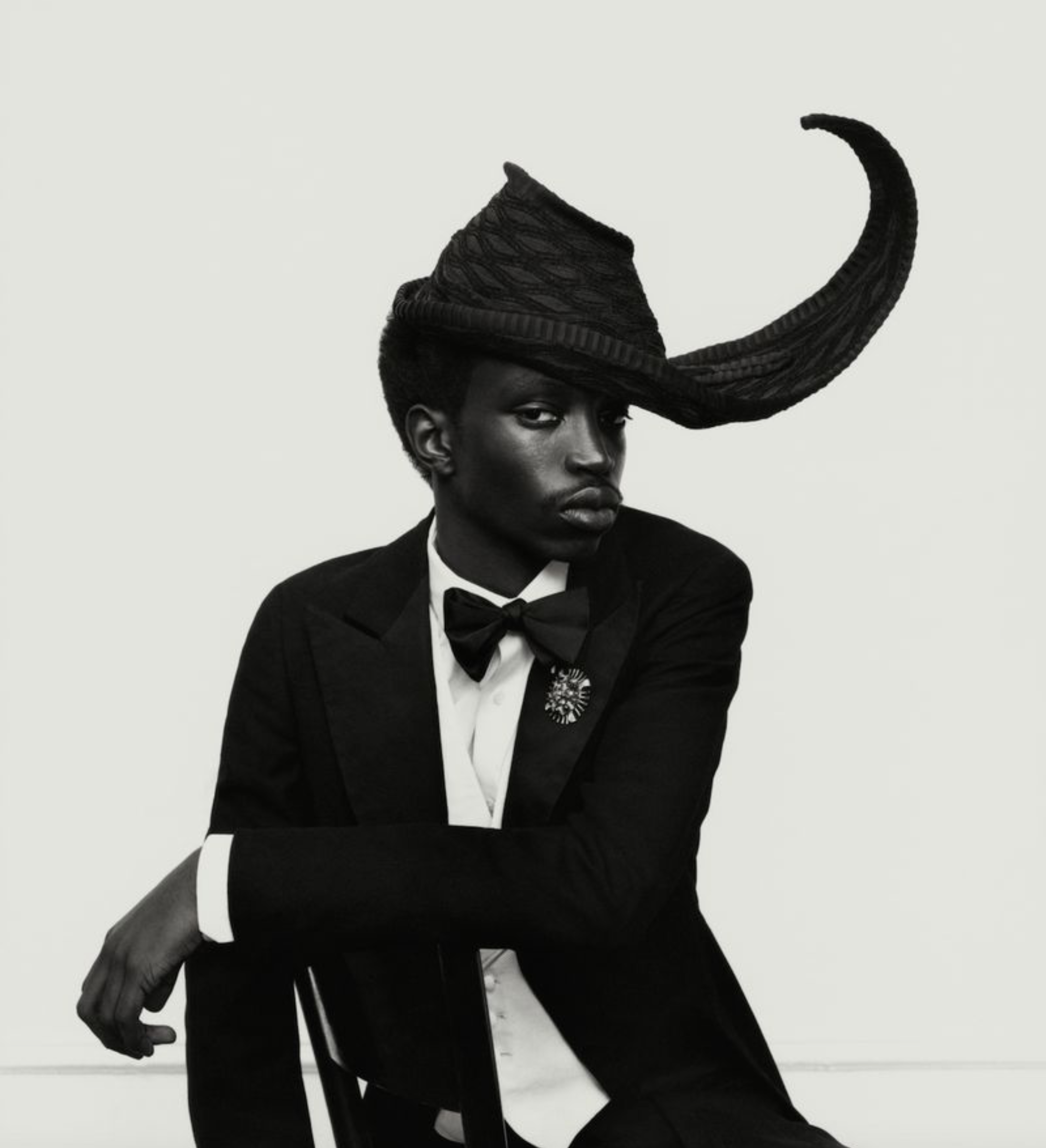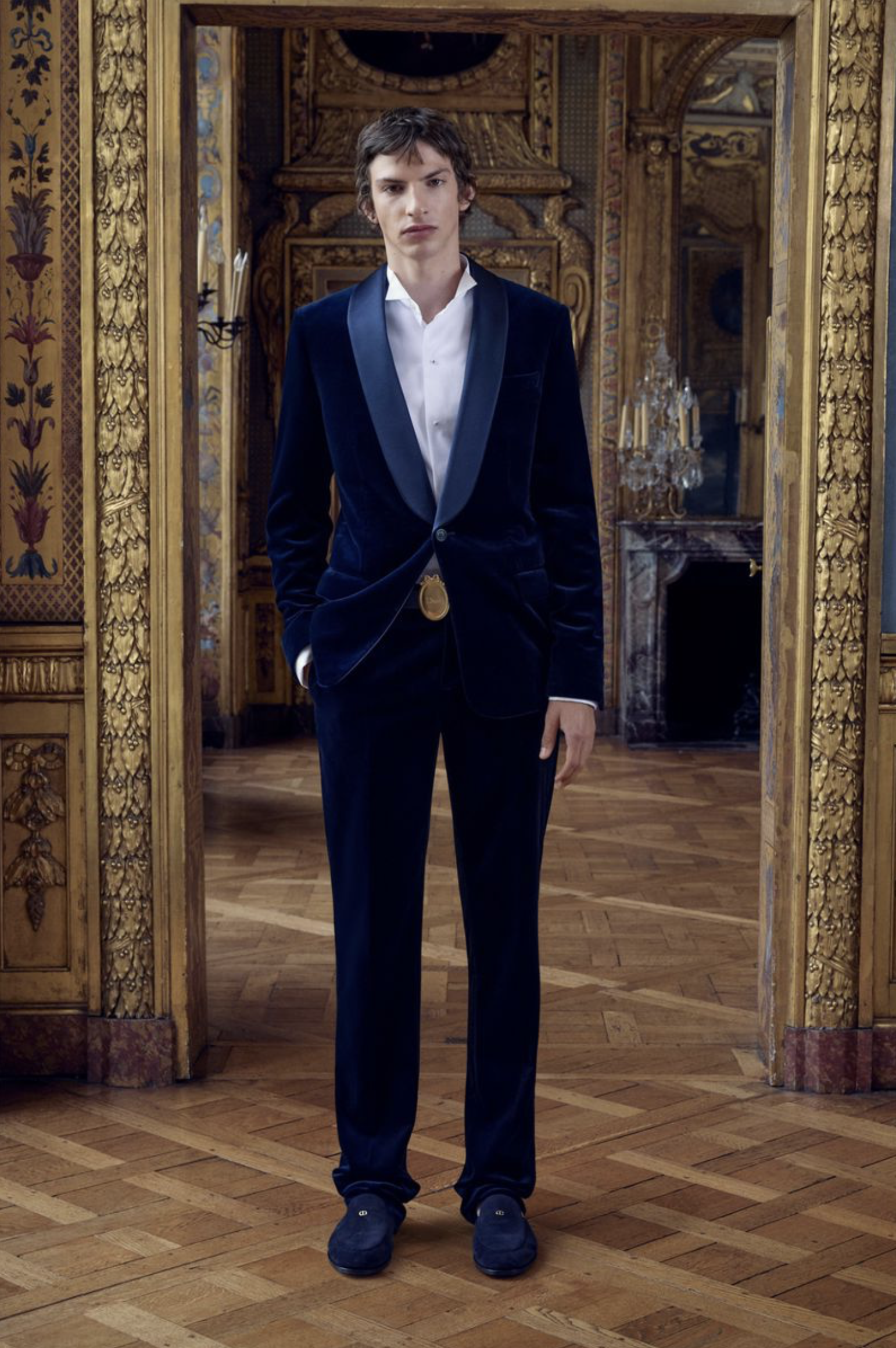'Superfine' Met Exhibition Catalogue May 2025 Dandy Images by Tyler Mitchell
/‘Superfine’ is the official catalogue published in conjunction with the Met Gala Monday night, May 5 and the ‘Superfine’ exhibition running from May 10-October 26, 2025. Rising star photographer Tyler Mitchell [IG], now represented by Gagosian, shot the ‘Superfine’ catalogue and this series of images from it.
In this presentation of catalogue story images, Mitchell works with top stylist Carlos Nazario [IG] to capture dandy-worthy images of artist Ike Ude and models including Abdou Ndoye, Craig Shimirimana, Lamine Seck and Mou Lam./ Hair by Dre Demry Sanders; makeup by Keita Moore; set designer Julia Wagner
The ‘Superfine’ book is available in the Met store for $75.00; member price $63.75, plus shipping. Rizzoli has a publication date of May 27, 2025.
‘Superfine: Tailoring Black Style’ explores the history of a style characterized by bold, refined fashions, provocative excess, and a defining relationship with Black masculinity across three centuries. This publication interrogates the origins of the style as an imposed uniform for Black servants in wealthy eighteenth-century European households, through its use as a statement of artistic and political agency during the Harlem Renaissance and the Civil Rights Movement, to the present day, when dandyism is also an essential component of hip-hop aesthetics and popular street wear. Sections highlight qualities of dandy style that resonate across time, including cosmopolitanism, caricature, disguise, ease, ownership, and presence.
The book features new photography of garments, accessories, and artworks from about 1700 to the present, as well as current voices in fashion, literature, and art writing on these objects. Including works by celebrated contemporary fashion designers, as well as early designs by anonymous makers, this engaging publication demonstrates how Black style arbiters used the dandy's signature tools--clothing, gesture, and wit--to break down boundaries and fashion new cultural and social realities.
Organized by key characteristics of dandyism that resonate across time, including presence, distinction, disguise, and respectability, this fresh interpretation of a centuries-old aesthetic draws on prominent Black voices in fashion, literature, and art—among them, Dandy Wellington, Amy Sherald, Iké Udé, and André 3000.
A Stunning AOC Discovery About Whaling in New England
Much to my astonishment I discovered an article about whaling in New England and the role of Black shipowners — not only whalers who were either free men or used their whaling wages to buy their freedom.
AOC has reproduction rights from The Conversation, so I grabbed the article just to get it up before the Met Gala. And with pleasure I share a non-Tyler Mitchell image of a dandyish-looking painting of whaling captain and shipowner Joseph G. Belain, by Elizabeth R. Whelan.
This is an incredible research discovery for me, with many other stories tied to it about Black entrepreneurship in the whaling industry. The profits from these enterprises were plowed into the abolition movement in the close relationships these Black businessmen enjoyed with the Quaker community from New England south to Philadelphia.

















